The Start of the Environmental Movement
By Anelamaikalani Miki-Han
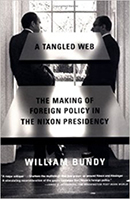
Adam Rome
Adam Rome is a professor at the University of Delaware. There he undertakes the subjects of environmental history of the United States and environmental nonfiction. In addition to The Genius of Earth Day, he has written another book in 2001, The Bulldozer in the Countryside: Suburban Sprawl and the Rise of American Environmentalism.
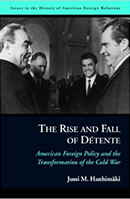

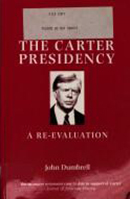
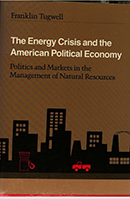
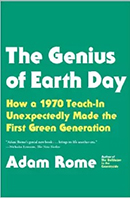
“Earth Day gave environmental activism a name.”1 And it did. Adam Rome expressed in his work the tremendous effect Earth Day had on the Environmental Movement. But before Earth Day, a variety of groups had taken notice of the changing Earth and the dangerous effect the human species had on our beloved planet. Sets of different people, such as scientists to women, predicted the inevitable doom we have created and suggested what could be done to spread awareness and to return to a better, cleaner world. Earth Day was a voice for these people. Thousands of events took place on and weeks after April 22, 1970 (Earth Day) that expressed the common idea of “Give Earth a Chance.”2 In The Genius of Earth Day: How a 1970 Teach-In Unexpectedly Made the First Green Generation, Earth Day was acknowledged as a beacon of hope that shined through the distress of environmentalists and gave birth to the Environmental Movement.
Although Earth Day marked the start of the Environmental Movement, many had taken the initiative to recognize the effects new inventions and human behaviors had on the ecosystem in which they lived in. During the sixties, a variety of different organizations and administrations were being formed to put forth such ideas. Among such people was President Lyndon B. Johnson, who believed in the great society, an idea to improve environmental, conservation, racial, educational and health programs. To him, the environment had a major role in the succession of it. He aggressively used the power of presidency to his advantage. To spread awareness to the public, he expressed his point of view on the environment in several major addresses, convened a White House Conference on such matters, and asked the President’s Science Advisory Committee to explore ways to restore the environment. The result of his work was “a torrent of legislation: Johnson signed almost 300 conservation and beautification measures.”3 The most important bills addressed “air and water pollution, solid-waste disposal, wilderness preservation, and endangered species.”4 These responsibilities fell to two administrations: the Federal Water Pollution Control Administration (1965) and the National Air Pollution Control Administration (1955). Others took the same initiative that President Johnson had on the environment. The League of Women Voters played a vital role in the fight for cleaner water and air and the protection and restoration of nature. The league claimed that “threats to environmental quality in suburbia were threats to ‘the women’s sphere.’”5 Their results were Massachusetts Clean Water Act (1966) and the Highway Beautification Act (1965). Conservationists played a huge part in changing environmental policy as well. Many took part in rebuilding countless organizations, such as the National Wildlife Federation (1936), which was the first conservation organization to rebuild itself, and the Sierra Club (1892). Such organizations took time to reorganize but soon showed productivity in helping the environment, such as the founding of the Redwood National Park and the stoppage of two dams in the Grand Canyon for example. Many actions had taken place the early twentieth century and even the late nineteenth century to contribute to the Environmental Movement, but Earth Day would have the greatest effect and push forward a force that could not be ignored.
Earth Day could not have happened if it wasn’t for one man, Gaylord Nelson, a senator with strong roots in liberalism. On September 20, 1969, he announced his plan for the “teach-ins.” (The “teach-ins” were to be called Earth Day shortly after, suggested by Julian Koenig, a famous copywriter of the time.) These teach-ins were environmental fairs and classes that express his ideas as well as the ideas of other environmentalists. He was “convinced that the same concern the youth of this nation took in changing this nation’s priorities on the war in Vietnam and on civil rights can be shown for the problems of the environment.”6 However, a staff was need to help take on such large task. His crew consisted of 6 activists: Denis Hayes, Andrew Garling, Stephen Cotton, Bryce Hamilton, Barbara Reids, and Sam Love. Everyone on staff had outstanding university credentials in politics or science and were activists of one sort or another. These people became essential in the set up for Earth Day. They coordinated with local groups to send out a newsletter, “Environmental Action: April 22,” and built a database for this event. The result of their hard work and efforts was millions of people’s involvement and thousands of ecologically events across the nation.
Events and speeches were underway on April 22, 1970 in all corners of the United States, from huge cities, like Chicago, to remote corners of the nation, such as Alaska. New York City, the “cultural capital,” had a huge festival in central park and even made Fifth Avenue and Fourteen Street into parks.7 The festival’s theme was imagine a world without cars. The New York City festival blamed most of the distress of environmental health on the automobiles, because they create smog and pollution in the air. The festival was huge, with two hundred booths, exhibits, and art sculptures lined in the street. Participation varied from children playing and protesting to the mayor of New York City, John Lindsay. This festival was “a great coming together, a soaring celebration.”8 Outside of festivals, speakers were influential people in encouraging change. Reverend John Claypool was one of these people. Unlike ordinary reverends, he tried to incorporate everyday public issues into his service. Once the environmental movement and Earth Day had begun, he started to preach about the environment. He believed that the environment was so close to the religious circles, and he suggested changing lifestyle to accommodate the environment to keep the balance in the world. He also believed there was hope in us and the future of our world. In addition to festivals and events, television was becoming more and more prominent in households in the sixties and seventies. Networks saw the opportunity they had in regards to the environment. Shows such as Sesame Street, Mister Roger’s Neighborhood and The Today Show began to influence the general public with the phrase, “New World or No World,” introduced by host Hugh Downs of The Today Show, by doing skits and speeches on their view on the environment.9 These shows would indorse this idea weekly to the public way after April 22, 1970. Earth Day had a powerful effect on the public that would soon lead to a better world.
Post-Earth Day caused a chain of reaction in response to the movement. Politically, many acts and associations were created due to the effect Earth Day had. Two new groups were formed in 1970: Friends of the Earth and Environmental Action. They were formed by environmentalist to build a powerful political operation and to become “cornerstones of a new professional lobbying effort in the nation’s capital.”10 In addition, environmental acts were also made stronger. The Clean Air Act (1970), the Clean Air Coalition (1970) and Clean Water Act (1972) were put into action by persuasive and determined environmental lobbyists. Education was also becoming effected by Earth Day as well. Colleges, universities, community and junior colleges were introduced to environmental studies, regardless of limited budgets. In elementary schools, educators began to add units about the environment into their studies and started extracurricular clubs. This was put through by the Environmental Educational Act of 1970. Earth Day also influenced new programs like water conservation measures, sewage treatment improvements, and recycling. Earth Day had become an inspiration to the betterment of our planet and started a movement that is still continuing to this day.
In Adam Rome’s work, The Genius of Earth Day, Earth Day was portrayed the moment of birth for the Environmental Movement. On April 22, 1970, he acknowledged that “Earth Day built a lasting eco-infrastructure: national and state lobbying organizations, environmental-studies programs, environmental beats at newspapers, eco sections in bookstores, community ecology centers.”11 Many effective acts and organizations were made after Earth Day, such as the Friends of the Earth (1970) and the Clean Water Act of 1972. Earth Day had also created more awareness to what the Earth has come to and what effect we and our new inventions, such as automobiles, had on the dangerous alternations that are shown in the ecosystem. Earth Day had brought such people together from different areas, ethnicities and gender to the same cause and had created a movement that could not be stopped.
Adam Rome was influenced by his character, which created such a bias in The Genius of Earth Day. Along with being a professor at the University of Delaware, he is a co-director of the environmental-humanities initiative in the College of Arts and Sciences and Unidel Helen Gouldner Chair for the Environment. He had much involvement in the environment and its wellbeing. Although well-rounded within the subject of the environment, he had little knowledge, as do most Americans, on the history of Earth Day before he had begun the research and writing of The Genius of Earth Day. In fact, he “believed that the first Earth Day is the most famous little-known event in modern American history.”12 So his curiosity and passion for the Earth and it’s environment created his favoritism for the importance of Earth Day in the Environmental Movement.
His work, The Genius of Earth Day, was written and published in 2013, which is very recent in relations to present. In 2013, the attitudes towards the environment were positive. But there was still improvements in the making to become a more environmental friendly community. Some inventions that accommodate to the environment are solar panels and electrical cars, made in 2013 or previously. By these inventions, the goal of less pollution and cleaner air became closer and closer. So, Adam Rome had definitely been influenced by the times of a new bio-consciousness with new inventions that help create and will create a cleaner world for all of us to live in. Although, none of this could have been possible if it wasn’t for Earth Day, which “inspired a decade of far-reaching legislation to control air pollution, restore the health of rivers and lakes, ensure safe drinking water, regulate hazardous waste disposal, protect endangered species, and much more.”13 2013 is a time of environmental awareness and attitudes the population has due to Earth Day.
In critical reviews of The Genius of Earth Day, Earth Day was thought of as “a transformative event.”14 According to Donna Seaman in her review, Rome’s work was a combing of vast interviews and archives of organizers and activists. Gaylord Nelson was the center of Earth Day because “it took the vision of Senator Gaylord Nelson of Wisconsin to bring it all together by proposing ‘a national environmental teach-in.’”15 The effects this event had were an opening to a wide range of actions and policies waiting to happen after the day was over. Reviewers expressed the thoroughness of Rome’s research was quite exquisite and thought that credit was due when needed. Critics also notice the accountability and noticeable link made between individual behavior and ecological health. In Rome’s work, reviewers express how he brought together many vast articles and interviews into a book that graciously praised Earth Day as the start of the Environmental Movement.
The Genius of Earth Day was very profound and produce much knowledge on a topic many were not too familiar with. Earth Day has always been over looked by the public and underappreciated. Earth Day was simply a day to celebrate the planet in which we live on. But during and after reading Rome’s book, many will realize that they have been taking the wrong point of view. Earth Day, in the eyes of the reader, is now “critical in the rise of the Environmental Movement” and is important to the lifestyle that we as a collective have and the wellbeing of the world in which we live in.16 The Genius of Earth Day is a great collection of articles and examples put together into a book that expresses the importance of Earth Day and the long term effects it will have on our country and on the whole world.
What position does the author take on the 70s being a time of severe crisis in the United States? And to what degree does the author portray the 70s as a continuation of the 60s? To answer these questions, the position that Adam Rome takes on in his book, The Genius of Earth Day, is a time of change in the seventies. In his work, he explains the stage of the ecosystem in the fifties and sixties, which was a time of heavy pollution. The seventies, however, was revolutionary in reaction to Earth Day. The seventies were still in environmental crisis, but Earth Day relieved some of the distress from acts passed by the government, such as the Clean Air Coalition (1970) and the Clean Water Act (1972). Altogether, there wasn’t crisis in the environmental aspect. Actually, reformation of the attitudes towards the environment took placed during the seventies. And although much of the Environmental Movement was a response to Earth Day and had taken much action in the seventies, it was a continuation of the efforts that were trying to be met in the sixties. Most of the involvement in the sixties was due to President Lyndon B. Johnson. He wanted to continue “the unfinished environmental business of the Kennedy Administration.”17 In reflection to Adam Rome’s work, The Genius of Earth Day, he had taken the position that although the seventies were as time of the Cold War, the continuation of the Vietnam War, and fears of communism, the environmental movement had created change in this crisis and had bettered a world in which we wanted to live in and ensure the wellbeing of it and ourselves as well.
In conclusion, Adam Rome wrote about story famously unknown. The knowledge of Earth Day and the history is so commonly unknown to the general public. In the book, it was incredible to see how this event is many hardly known, although it has so much effect to a movement and how the public live today. It was event that couldn’t have been possible without the involvement of the millions that participated and the activists that were present through this whole event through thick and thin. The story told in The Genius of Earth Day is a magnificent and inspiration one to change the perspective in anyone on the matters of the environment. Altogether, Earth Day was a symbol of hope, for not only the environment, but for anything. It shows how a small idea or dream can become a reality. It created “a sense that if you really wanted to do something, you could. Just go ahead and do it.”19
Footnotes:
- Rome, Adam. The Genius of Earth: How a 1970 Teach-In Unexpectedly Made the First Green Generation. New York: Hill and Wang, 2013. Print.
- Rome, Adam. 1.
- Rome, Adam. 10.
- Rome, Adam. 3.
- Rome, Adam. 19.
- Rome, Adam. 19.
- Rome, Adam. 121.
- Rome, Adam. 161.
- Rome, Adam. 1.
- Rome, Adam. 1.
- Rome, Adam. 1.
- Rome, Adam. 1.
- Seaman, Donna. “The Genius of Earth Day: How a 1970 Teach-In Unexpectedly Made the First Green Generation.” Review. n.d.: n. pag. Print.
- Seaman, Donna. 1.
- Rome, Adam. 1.
- Rome, Adam. 17.
- Rome, Adam. 6.
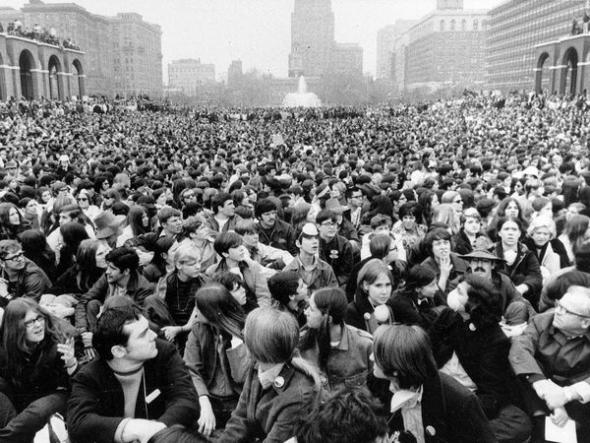

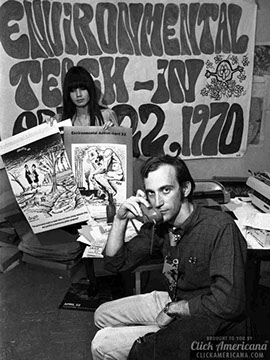
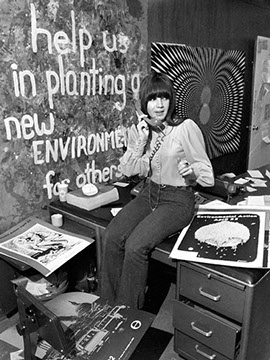
4 - 4
<
>